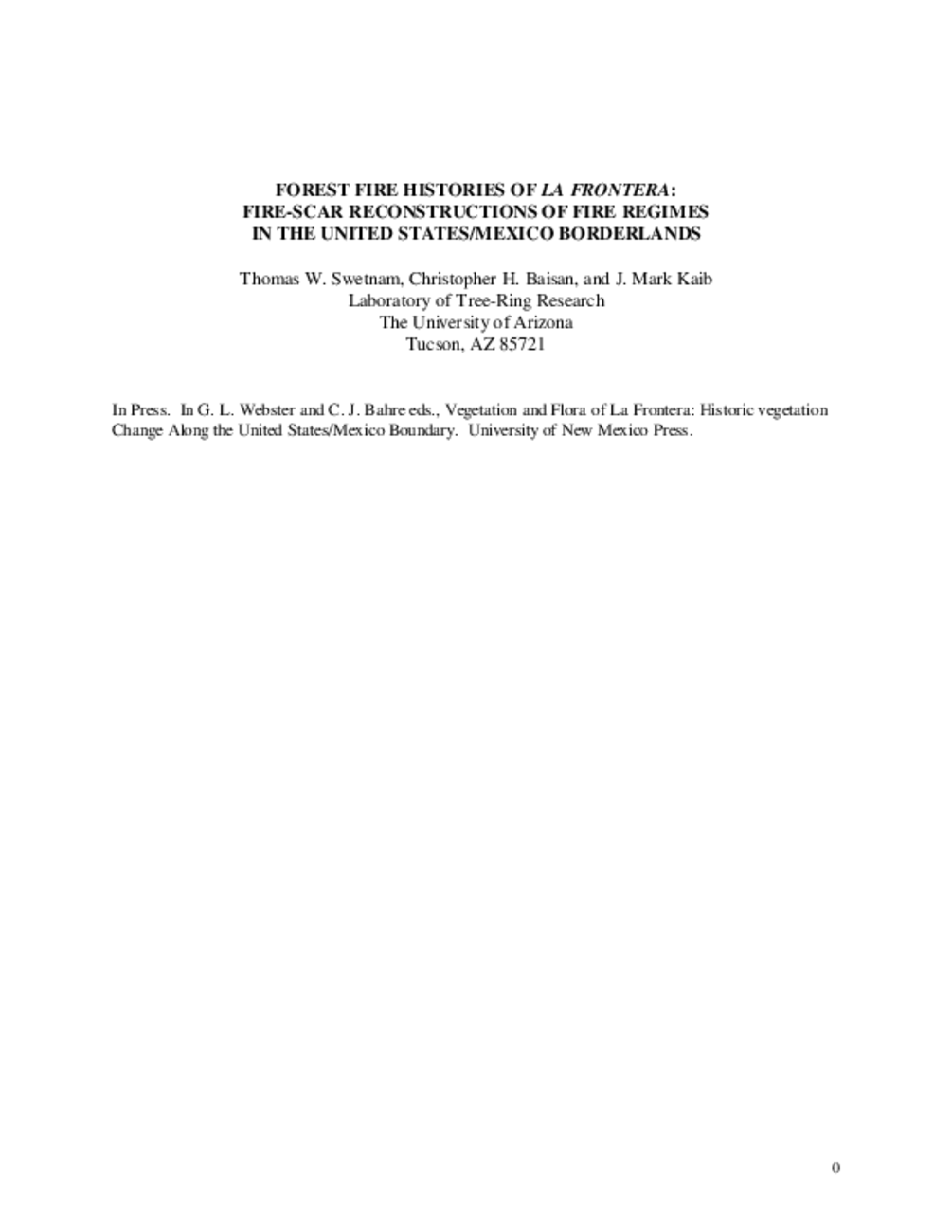Forest Fire Histories of La Frontera: Fire-Scar Reconstructions of Fire Regimes in the United States/Mexico Borderlands
Fire is a dominant ecological process in almost all landscapes of La Frontera. Fire histories from throughout the region on the United States side of the border show that, before circa 1900, extensive surface fires occurred within pine-dominant forests at about the same frequency as wet-dry cycles related to the El Niño-Southern Oscillation, i.e., 2 to 7 year intervals (Swetnam and Betancourt 1990, 1998; Swetnam and Baisan 1996a, 1996b). Regionally synchronous fire events occurred at the rate of about 10 per century and often coincided with the most extreme wet-dry cycles. Extreme changes in fire regimes and ecosystems occurred during and following the Euro-American settlement period from circa 1870 to 1900 (Leopold 1924; Weaver 1951; Cooper 1960; Covington and Moore 1994). Tree-ring reconstructions of fire, climate, and tree population dynamics provide the most detailed and specific evidence of these changes over periods of centuries. When these reconstructions are compared and analyzed in the context of land-use histories it is possible to quantitatively assess the multiple factors causing past fire regime variability (Baisan and Swetnam 1997; Swetnam and Betancourt 1998).
La Frontera offers rich opportunities for the study of cultural and natural fire history. Divergent histories of land use in Mexico and the United States have caused striking differences in fire regimes and ecosystem structures (Leopold 1937; Marshall 1957, 1963; Minnich 1983; Dieterich 1983; Minnich and Bahre 1995; Swetnam and Baisan 1996b; Fulé and Covington 1994, 1996, 1997). Moreover, each of the sky island mountain ranges has a somewhat different topography and vegetation. Prior to circa 1900, fire regimes may have been regulated primarily by these unique physical and biological characteristics. However, the importance of humans --- specifically Native Americans --- in modifying pre-Euro-American settlement fire regimes in this region has often been emphasized (Dobyns 1981, Pyne 1982).
The purpose of this paper is to provide a historical perspective of past fire regimes in La Frontera and the causes of their variability. During the past two decades we (the authors, our students, and collaborators) have conducted many different tree-ring based fire history studies in the montane forests and woodlands of this region. Here we list the locations and characteristics of our study sites, and we describe fire interval statistics for each site. Each of our fire history reconstructions is a unique chronology of fire events in a specific location over a period of at least two centuries. Since we do not have the space here to describe all of the sites and reconstructions in detail, we have chosen fire histories from three different mountain ranges (Santa Catalina, Sierra de los Ajos, and Animas) that exemplify the general and specific patterns we have documented in La Frontera.

